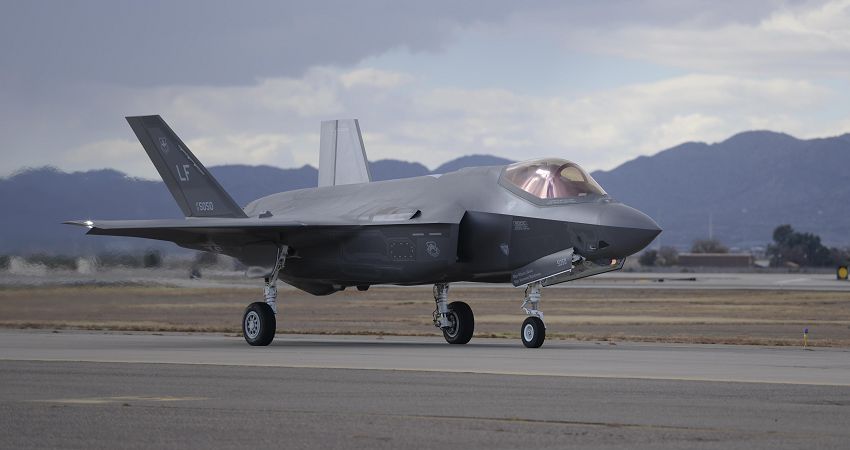This post is also available in:
 עברית (Hebrew)
עברית (Hebrew)
As part of the Block 4 series of upgrades for the F-35 Joint Strike Fighter jet, the F-35 will be upgraded with a system that detects if the jet is on a collision course with the ground. If the jet notices that it is on a collision course it will alert the pilot to take corrective actions. If the pilot is unresponsive, then the jet will automatically change its flight path to a safety.
The system is called the Automatic Ground Collision Avoidance System (Auto-GCAS). It was first deployed on the F-16 fighter jet and it would have likely saved the life of the Japansese pilot, Major Akinori Hosomi, if the system had been installed onto the F-35 that he crashed into the Pacific Ocean back in April 2019.
One of the largest threats that fighter pilots have to deal with is accidental ground collisions. A fighter pilot traveling at hundreds of miles per hour in all three dimensions can often experience spatial disorientation and lose the ability to understand where they are located relative to the environment.
It is also likely for pilots to experience G-LOC, the state when pilots lose consciousness due to experiencing high levels of g-forces. If a pilot where to experience G-LOC during any form of nose dive, then the pilot would be left with several seconds to regain consciousness and to correct the flight path before crashing into the ground.
With Auto-GCAS, most ground collisions just won’t happen. Popularmechanics.com mentions that Auto-GCAS is currently deployed on the F-22 Raptor and F-16 Fighting Falcon, and is responsible for saving the lives of at least eight F-16 pilots since 2014.
Auto-GCAS will utilize the F-35’s geolocation, terrain mapping, and automation capabilities to detect the possibility of a ground collision. If the system detects that the jet is on a flight path to collision, it will alert the pilot to reroute the jet and suggest a recommended flight path. If the pilot is unresponsive for whatever reason, the autopilot will take control and automatically change the jets flight path. The autopilot will then only be deactivated if the jet receives a response from the pilot.
The system is planned to be installed onto the United States Navy’s F-35C and Marine Corps F-35B in the near future, while the Air Force’s F-35A fighters are currently being deployed with the system.


























